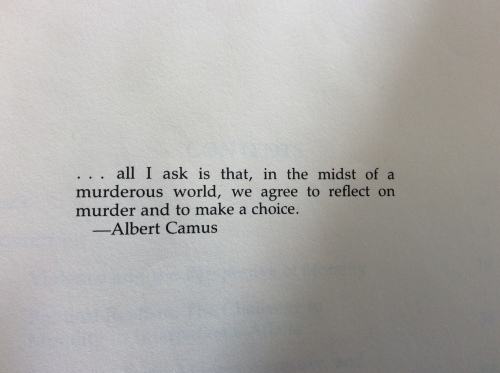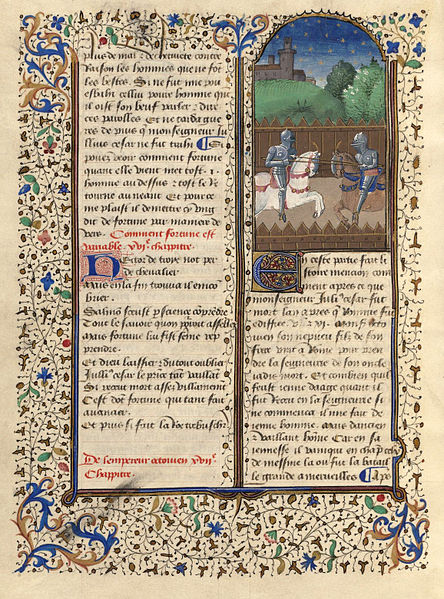The Weaponisation of Ethics
 I am currently in Canberra for the Ethics Under Fire: Issues and Challenges from Contemporary Warfare for the Australian Army workshop, which has been organised by the Australian Centre for the Study of Armed Conflict and Society. The keynote talk was delivered by Major General Charles Dunlap, who is perhaps best known for his concept of lawfare, which was coined to explain how enemy groups may manipulate the laws of armed conflict to undermine a state’s capacity to wage war. One of the reasons why I find his work so interesting – although perhaps not in the way he intended – is that it draws attention to the way in which international law and moral codes can be used to make war possible. Although we tend to view these rules and regulations as a powerful external restraint on war, limiting the death and destruction that can be caused by banning certain weapons, prohibiting certain attacks and protecting certain targets, Dunlap reminds us that we must also pay attention to what it permits. The laws of armed conflict are, he argues, a lot more permissive than many people assume, particularly when it comes to attacks on civilians.
I am currently in Canberra for the Ethics Under Fire: Issues and Challenges from Contemporary Warfare for the Australian Army workshop, which has been organised by the Australian Centre for the Study of Armed Conflict and Society. The keynote talk was delivered by Major General Charles Dunlap, who is perhaps best known for his concept of lawfare, which was coined to explain how enemy groups may manipulate the laws of armed conflict to undermine a state’s capacity to wage war. One of the reasons why I find his work so interesting – although perhaps not in the way he intended – is that it draws attention to the way in which international law and moral codes can be used to make war possible. Although we tend to view these rules and regulations as a powerful external restraint on war, limiting the death and destruction that can be caused by banning certain weapons, prohibiting certain attacks and protecting certain targets, Dunlap reminds us that we must also pay attention to what it permits. The laws of armed conflict are, he argues, a lot more permissive than many people assume, particularly when it comes to attacks on civilians.
His focus today was on what he referred to as the weaponisation of ethics, which has obvious overlaps with his worries about lawfare. His basic argument is that enemy groups have become particularly adept at turning our ethical codes against us and exploiting our distaste for civilian casualties. Because they know that any evidence of collateral damage will provoke public outrage, they now surround themselves with innocent civilians to protect themselves from attack. As a result, military commanders find themselves in an impossible situation. Either they use the force they are legally and morally entitled to use at the risk of being seen as unethical or they postpone their attack and allow an adversary to escape unharmed. The worry for Dunlap is that our obsession with avoiding civilian casualties is preventing the military from being an effective force, creating what he considers to be a dangerous moral hazard for military strategists. Fears that the public might perceive operations to be unethical means that troops are now failing to act to prevent enemy forces from doing greater harm. At the same time, he argues that this moral paranoia is having a detrimental impact on the lives of soldiers, who have become reluctant to act for ‘fear of upsetting liberals back home’. These misplaced concerns about the legitimacy of civilian harm – both in terms of ethics and in terms of international law – are undermining the effectiveness of the armed forces and giving the enemy a competitive edge.
I hardly think it is accurate to suggest that the military has been cowed into submission by a bunch of bleeding heart liberals like me, even if they have become more cautious when it comes to targeting. What really caught my attention during the talk was not his diagnosis of the problem but his solution. Given his concerns about the role of ethics in all of this, you might expect Dunlap to advocate for the abandonment of ethics or at least its depreciation. But rather than advocating for the marginalisation of these ethical codes, he argues that they should be actively inculcated within the ranks. His rationale is really quite straightforward: an ethically literate soldier is a more effective soldier because they will be more certain about when it is ok to kill and when it is not. Morality should not be seen, therefore, as a burden on a soldier but as something that gives them confidence, reassuring them that what they are doing is the right thing to do. If it is permissible for them to kill an enemy combatant, he wants them to know that it is permissible. If it is permissible for they to cause a certain amount of collateral damage, then he wants them to know that it is permissible. And if a colleague is doing something that is impermissible, he wants them to know that this is impermissible.
The implications of this argument are particularly significant for those of us interested in the relationship between ethics and war because it seems to upend conventional accounts, which assume that the former acts as some sort of external restraint on the latter. Far from limiting the violence inflicted on the battlefield, ethics might actually enable and even encourage it. There is an interesting but unintended overlap here with the excellent work that James Eastwood has been doing on the Israel Defence Force (IDF), which focuses on the ethics training provided at military academies. Rejecting the notion that ethics and war exist in some sort of antagonistic partnership, Eastwood claims that this ethics training forms an essential part of how recruits cultivate a sense of moral selfhood. These training rituals, he explains:
promote a regime of governmentality aimed at the formation of soldiers as ethical subjects who monitor and strive to enhance their conduct and who believe strongly in the righteousness of the army for which they fight. Ethical capacity has been added to physical fitness and battle-readiness as a feature of all-round military preparedness. This fos ters a kind of militarism in which what one does during military service becomes a barometer of character; it speaks a truth about the soldier as a subject.
I am sure I will be returning to this issue again and again as I try to understand how the principle of noncombatant immunity functions to legitimise certain acts of violence and render certain populations disposable. What matters in the short-term is that the ability of ethics to critique violence may not be as straightforward as is often assumed.

 James Turner Johnson’s survey of the just war tradition in
James Turner Johnson’s survey of the just war tradition in  The list is also incomplete and there are groups of people that one might expect to be
The list is also incomplete and there are groups of people that one might expect to be Johnson’s survey of these medieval texts is important because it allows us to trace the historical roots of noncombatant immunity whilst remaining attentive to the political and professional pressures that shaped its formation. Although he argues that these medieval doctrines provide a ‘moral floor’ for the regulation of violence and the moderation of war, he warns against the idea that they represented some sort of ideal (JWRW: 160). What is interesting is that many of the challenges we face today, such as the difficulty distinguishing between combatants and noncombatants and the irregulars disguising themselves as civilians, were also problems back then. A common ruse in medieval combat, Johnson explains, ‘was to dress knights as monks, merchants, or pilgrims and thus gain the element of surprise over a foe’ (JWRW: 133). The idea that the increasingly blurry boundary between combatants and noncombatants is a distinctly modern problem is not borne out by the historical record.
Johnson’s survey of these medieval texts is important because it allows us to trace the historical roots of noncombatant immunity whilst remaining attentive to the political and professional pressures that shaped its formation. Although he argues that these medieval doctrines provide a ‘moral floor’ for the regulation of violence and the moderation of war, he warns against the idea that they represented some sort of ideal (JWRW: 160). What is interesting is that many of the challenges we face today, such as the difficulty distinguishing between combatants and noncombatants and the irregulars disguising themselves as civilians, were also problems back then. A common ruse in medieval combat, Johnson explains, ‘was to dress knights as monks, merchants, or pilgrims and thus gain the element of surprise over a foe’ (JWRW: 133). The idea that the increasingly blurry boundary between combatants and noncombatants is a distinctly modern problem is not borne out by the historical record. I have just come across this book by Janina Dill entitled Legitimate Targets? Social Construction, International Law and US Bombing (2014). Unfortunately it is going to take a few weeks to ship from the UK, which is a shame because it looks incredibly pertinent to my civilian casualties projects. As the
I have just come across this book by Janina Dill entitled Legitimate Targets? Social Construction, International Law and US Bombing (2014). Unfortunately it is going to take a few weeks to ship from the UK, which is a shame because it looks incredibly pertinent to my civilian casualties projects. As the 



 The report attributes the rise to the increased use of high-explosive weaponry, such as mortars, rockets and grenades, in densely populated civilian areas. The overwhelming majority of civilian casualties (72%) were attributed to anti-government forces, but pro-government forces – which include international troops – were responsible for 14% of the attacks. Another 3% was blamed on ‘unattributed explosive remnants of war’, which probably includes the
The report attributes the rise to the increased use of high-explosive weaponry, such as mortars, rockets and grenades, in densely populated civilian areas. The overwhelming majority of civilian casualties (72%) were attributed to anti-government forces, but pro-government forces – which include international troops – were responsible for 14% of the attacks. Another 3% was blamed on ‘unattributed explosive remnants of war’, which probably includes the  Even in cases where there is clear evidence that the killings were unlawful, family members quickly discovered that they had no recourse to the law. On the one hand, coalition troops are
Even in cases where there is clear evidence that the killings were unlawful, family members quickly discovered that they had no recourse to the law. On the one hand, coalition troops are 